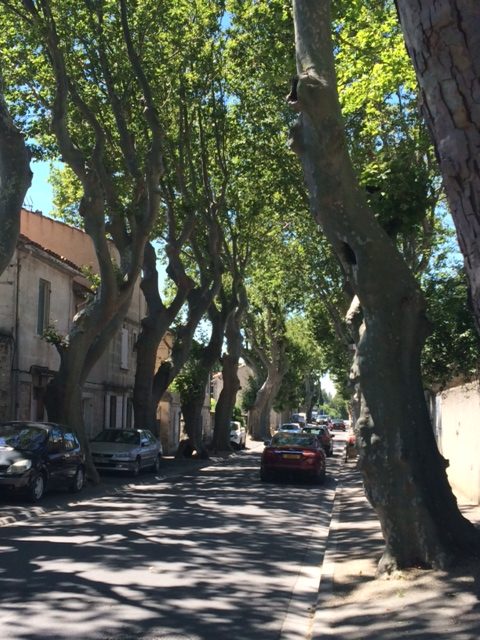 It’s been a week of emotional tension in Europe. The civil dissonance feels like wounds that compound wound that increase the wounded. No matter what time I would have driven the French countryside around St. Rémy and Arles which Van Gogh painted extensively, I would have felt his presence. Now, the mark of rejection, desire and fragility bodily screams. As the mistral blows, there are Van Gogh’s “canvases” everywhere you look. Gnarly olive trunks shoot from rocky soil, their leaves twisting pale, then dark in the wind. The plane trees leap against the narrow sides of the road, their trunks like living spirits, almost choking the lane. The columnal cypress, splitting and swirling, flattened against the blue sky.
It’s been a week of emotional tension in Europe. The civil dissonance feels like wounds that compound wound that increase the wounded. No matter what time I would have driven the French countryside around St. Rémy and Arles which Van Gogh painted extensively, I would have felt his presence. Now, the mark of rejection, desire and fragility bodily screams. As the mistral blows, there are Van Gogh’s “canvases” everywhere you look. Gnarly olive trunks shoot from rocky soil, their leaves twisting pale, then dark in the wind. The plane trees leap against the narrow sides of the road, their trunks like living spirits, almost choking the lane. The columnal cypress, splitting and swirling, flattened against the blue sky.
In St. Rémy, we went to the asylum, St. Paul de Mausole, where Van Gogh spent 53 weeks near the end of his life. Walking through the old building, we were met by courtyard fully fleshed with blooming lavender. Most of us fell quiet. The geometric proportion was perfect as was the balance of color and scent. Very quietly, it showed us the twisted nature of our anxiety, our twitchy way with our cell phones. It made a contrast with our impulses to exclude others – artists, the ill, misfits. The lavender field echoed a gravity that a reproduction of Van Gogh’s Pietà, just inside the wall, brought on.
We see through Van Gogh’s eyes with a heightened sense of beauty. It comes with a plea and a certain prophecy – a plea for harmony and a prophecy of dissension. Beauty is guaranteed and doomed at the same time. The artist has and conveys a complete knowledge of both.
Above all, in Van Gogh’s paintings there is a plea for understanding – for more elegance in the human soul. If that elegance is too much to ask for, the next best option is to be quiet, to let it rest. Silence has its eloquence.


The logic of this moving piece makes good on the idea that influenced by the paintings we see things as eloquent. This is a very old idea that fell into disuse as Nietzschean nihilism took root in the popular culture. Looks like Van Gogh’s paintings preserved it for us.